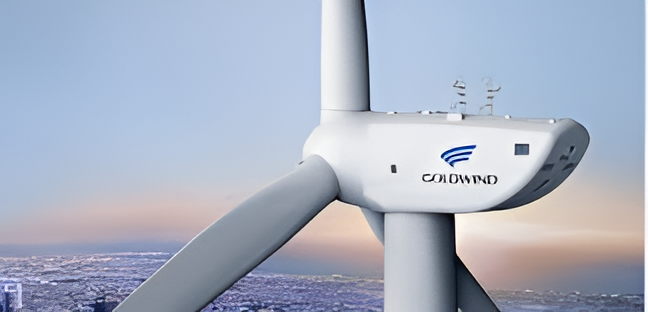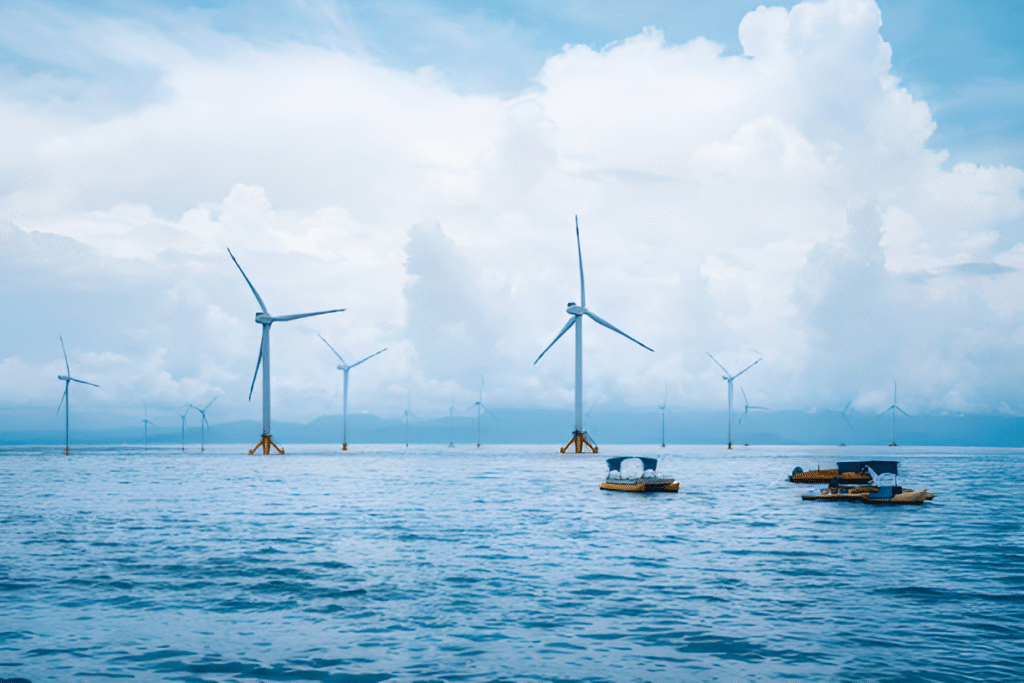China wind energy 2025 boom with 223 GW under construction, it was building Global wind energy leader
China’s Wind Power Leadership Soars in 2025
China is building 510 GW of utility-scale solar and wind, nearly 74% of the total 689 GW under construction globally,(Financial Times News) according to a new report published by Global Energy Monitor.
This huge increase in renewable power generation is one element of China’s overall plan to improve energy security, slash dependence on imported fossil fuels, and make climate targets well before the UN Climate Change Conference in Belém, Brazil.
China’s pipeline of utility-scale wind power has grown to 593 GW and nearly 223 GW is currently under construction—more than 45% of total global wind energy development. The total installed wind power capacity in the country is now more than 700 GW, and the new capacity added reached 357 GW in 2024, which became a new record in the world.
China has firmly cemented its lead in both onshore and offshore wind, contributing to energy security, industrial and global decarbonization targets, the GEM said.
According to the Centre for Research on Energy and Clean Air, clean energy also accounted for 25% of China’s GDP growth in 2024. The analysis also highlights the increasing role of offshore wind (28 GW), particularly in industrial coastal provinces with plans to decarbonize.
“China is now dominating the world in the build-out of renewable energy,” GEM said, adding that the country may soon claim the title as the world’s first true “electrostate.”
China Offshore Wind Development Industrial Coast
China is quickly expanding its offshore wind capabilities, with its coastal provinces — from Guangdong to Jiangsu and Shandong — rushing to build offshore wind farms. The capacity of offshore wind has jumped from less than 5 GW in 2018 to 42.7 GW in 2025, and another 28 GW are under construction. There are 67GW in the pipeline offshore of projects – including state-of-the-art floating wind projects and grid connections to help support new green hydrogen plants that are being developed.

“Offshore wind is now especially important in the decarbonization of China’s industrial heartlands,” said GEM researcher Mengqi Zhang.
Transition from Fossil Fuels, Enhancing Energy Security
China’s strategy is based on: Wind power is central to China’s efforts to:
Reduce coal and oil imports
Enhance energy independence
Cut industrial emissions
Get the power grid into the twenty-first century and on solid ground.
The National Energy Administration notes that in Q1 2025, wind turbine electricity consumption accounted for nearly 12% of electricity consumption, which was more than thermal power scale. Wind power is central to China’s goal of reaching carbon neutrality by 2060.
Mega Wind Projects Are the Global Scale In another
China Wind Energy 2025 – Notable wind projects:
Ultra-high-capacity wind farms in Ningxia (16 GW and up)
Shandong Offshore Mega cluster (10+ GW floating platforms)
Ultra-high voltage wind-to-grid corridors between Inner Mongolia and Xinjiang and coastal provinces
Those rely on advanced, often greater than 16 MW, turbines built by names such as Goldwind, Mingyang and Envision.
Wind Energy Projects Under Construction in China
| Metric | Value |
| Wind-Solar Energy Pipeline (Announced + Under Development) | 593 GW |
| Wind Projects Under Construction | 223 GW |
| Share of Global Wind Construction | ~45% |
| Operational Wind Capacity | 700+ GW |
| Offshore Wind Operational | 42.7 GW |
| Offshore Wind Under Construction | 28 GW |
| Offshore Wind Pipeline | 67 GW |
Global Leadership and Implications
China’s wind energy policy goes beyond the transformation at home—it is changing global markets and establishing models for the clean energy future. The country now:

- Home to the world’s largest wind fleet, with more installed and under-construction capacity than any other country.
- Produces more than 70 percent of the world’s wind turbine parts, including blades, nacelles, towers and power converters. Goldwind, Mingyang, and Envision, are only some of the world’s top companies which have exported significantly to Asia, Africa, Latin America and Europe.
- Forwards in wind-to-hydrogen integration, with multiple “pilot” projects using excess wind energy to produce green hydrogen, for transport, industry and power storage.
- Leaders of Floating Offshore Wind in the Asia-Pacific region, with the use of deep sea resources and advanced offshore engineering, to install turbines in areas which previously experienced limitations.
Together with government supported innovation and targeted export promotion, these unparalleled scales have reduced global costs of wind power technology. These types of partnerships are particularly beneficial for emerging countries because they have access to cheap turbine imports, financing of projects, and technical support. This is why China’s wind power success, which has not occurred in a vacuum, is not just a success for the nation, it is also one of the drivers of the world-wide move to clean energy.
Looking Ahead to COP30
With the 2025 UN Climate Change Conference (COP30) in Belém, Brazil on the horizon, all eyes are on China’s upcoming climate commitments. The Chinese government has indicated it will release stronger national targets in line with the nation’s long term carbon neutrality commitment. These could include, according to policy insiders and analysts:

- Increasing the countrywide wind share in China’s energy mix to hasten fossil fuel replacement.
- Creating separate industrial hubs for offshore wind – especially in coastal-prone Jiangsu, Shandong and Guangdong – to smooth permitting, supply chain and grid connection.
- Implementing national green hydrogen targets, with some of the production requirement coming from wind-powered electrolysis, in industrial clusters.
- Introduction of a single program for offshore wind leasing, to drive transparency and scalability for use of the seabed and infrastructure planning, based on the leading systems in the U.S. and Europe.
These policies will ensure that China continues to be not only the world’s largest wind power installer as china wind power capacity growth makes china Global wind energy leader, but also China playing a leading role in COP30, its announcements are expected to determine the direction of international climate negotiations and global flows of renewable energy investment.
Offshore Wind: Opportunities and Challenges
Whilst we have seen phenomenal growth in offshore wind capacity, China is also experiencing technical, regulatory and environmental issues that need to be addressed if growth is to be sustainable and scaled. Key hurdles include:

- Delays in grid connection, preventing efficient transmission of power from offshore farms to onshore networks.
- Licensing difficulties – local, provincial, and national administrative authorities overlap each other, which creates administrative barriers.
- Resilience to Typhoons, especially along coastlines surrounding the South China Sea and East China Sea, which require expensive, high-end turbine technology.
- The cost of the deep-sea floating wind, as well as the logistics, are high, involving expensive anchoring, heavy-lift vessels and dedicated ports.
But ambition among the provinces living in Jiangsu, Guangdong and Fujian, in addition to government policy tools such as green finance, feed-in tariffs and central planning, ensures the sector continues to grow. Innovative offshore leasing mechanisms that draw their inspiration from global best practices are creating a conducive investment climate.
Committing to deep R&D on deep-sea foundations, subsea cables and typhoon-proof turbines places China on a path to overcoming barriers and further asserting its offshore wind leadership in Asia and beyond.
Wind Power as an Economic Engine
The effects of wind energy reaches far beyond environmental benefits into a strong economic powerhouse. Per the Centre for Research on Energy and Clean Air (CREA):
- Wind and its upstream supply chain represented 25 percent of GDP growth in China in 2024.
- And the sector has spawned more than 3 million jobs across dozens of industries.
- The development of wind energy promotes grid modernization, smart converters, and logistics infrastructure.
- China’s exports of wind technology — turbines, blades and electronics — are taking off, serving developing markets in Latin America, Africa and Southeast Asia.
From Energy User to “Electrostate”
Wind power now supplies a growing slice of China’s:
High-speed rail networks
Industrial robotics and manufacturing machinery
Urban heat and cold grids
Data centers and AI infrastructure
This shift is helping to create China as the world’s first emerging “electrostate” — an economy predominantly fueled by renewable electricity, notably wind power, that will fund a sustainable and resilient future.
Last Word
China’s plans for a major build-out of wind and solar plays a central role in the global renewable energy revolution this year. Nothing like China’s Wind Energy Surge in 2025 renewable energy expansion. With 510 GW of solar and wind in construction— 74% of the world’s total—and more than 1.5 TW already in operation, China is redrawing the rules of the global energy game.
From emerging as a clean energy economic powerhouse to aspiring to have the largest offshore wind fleet anywhere, China is, at the same time, a climate leader as well as a principal force behind international decarbonization.
As the world gears up for the UN Climate Conference, all eyes are much more on China – not just for its commitments, but for its unparalleled execution at scale..
📌 FAQs: China wind energy 2025 Booming
What is China’s wind power installed capacity in 2025?
Total wind power installed in China reached above 700 GW as of 2025, and it had 223 GW under construction at that year wind energy market in the world.
What portion of the world’s wind power is being designed in China?
China is also constructing nearly 45 percent of all wind projects globally, the Global Energy Monitor says. This consists of 223 GW of wind installed from the 2025 under construction.
China is investing heavily into wind power?
China’s wind push is spurred by its ambitions to cut imports of fossil fuels, strengthen energy security, meet its climate targets and position itself as the world’s supreme “electrostate” — an economy driven chiefly by electricity.
What is the role of offshore wind in China’s Energy Plan?
Offshore wind is vital for decarbonizing industrialized coastal regions such as Jiangsu and Guangdong. China has 42.7 GW in operation and 28 GW under construction offshore wind capacity in 2025.
Who are the major wind turbine manufacturers in China?
The top wind turbine companies in China are Goldwind, Mingyang, and Envision and their products, which are made up of more than 70 percent of the wind turbine parts and exported to the global markets.
What are the wind energy target for COP30?
In the lead-up to COP30, China will set out plans to increase national wind targets, offshore wind leasing programs, as well as green hydrogen mandates that are being driven by wind.
How does wind power contribute to China’s economy?
China’s GDP growth in 2024 gives 25pc credits to wind energy and 3 million jobs are related to the job sector in China, CREACentre for Research on Energy and Clean Air (CREA).
Is China leading the global transition to renewable energy?
Yes. China’s 510 GW of solar and wind projects under construction and more than 1.5 TW in operation is driving the world’s energy transition.

